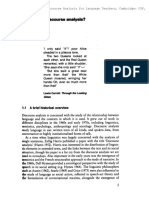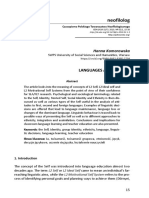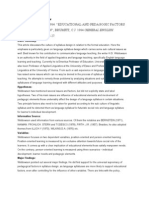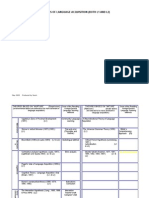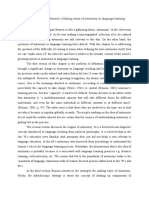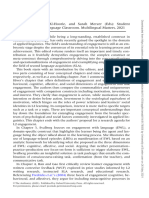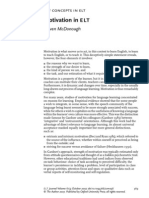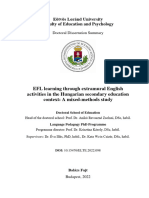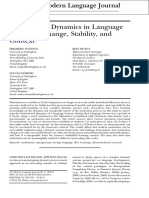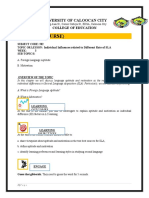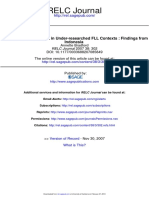0% found this document useful (0 votes)
185 views11 pagesLanguage Learning Motivation
This document provides an overview of theories and concepts related to motivation in language learning. It discusses definitions of motivation, influential theories like Gardner's socio-educational model and Dörnyei's 10 commandments. It also summarizes theories of motivation from psychology like expectancy-value theory and self-determination theory. Motivation is presented as a complex individual difference variable that can impact second language acquisition. The document aims to define key concepts and theories to understand dimensions of motivation in language learning.
Uploaded by
Victor Hugo Rojas B.Copyright
© © All Rights Reserved
We take content rights seriously. If you suspect this is your content, claim it here.
Available Formats
Download as PDF, TXT or read online on Scribd
0% found this document useful (0 votes)
185 views11 pagesLanguage Learning Motivation
This document provides an overview of theories and concepts related to motivation in language learning. It discusses definitions of motivation, influential theories like Gardner's socio-educational model and Dörnyei's 10 commandments. It also summarizes theories of motivation from psychology like expectancy-value theory and self-determination theory. Motivation is presented as a complex individual difference variable that can impact second language acquisition. The document aims to define key concepts and theories to understand dimensions of motivation in language learning.
Uploaded by
Victor Hugo Rojas B.Copyright
© © All Rights Reserved
We take content rights seriously. If you suspect this is your content, claim it here.
Available Formats
Download as PDF, TXT or read online on Scribd
/ 11


